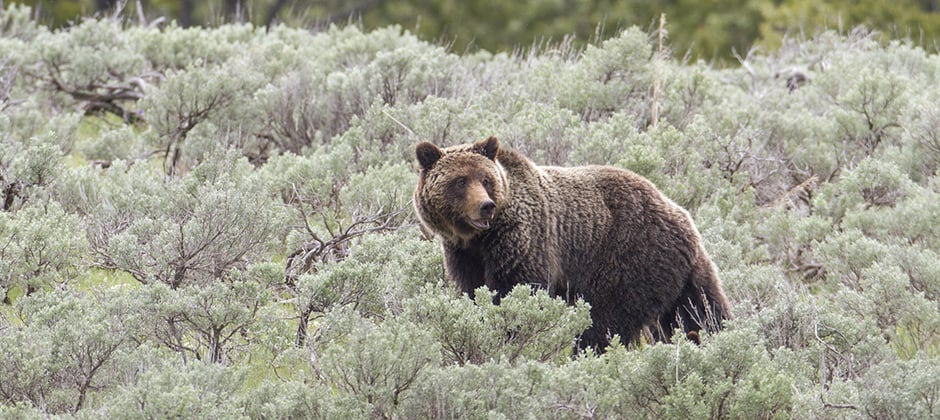Share this article
JWM: When do grizzlies prey on livestock?
Decades of records of grizzly bears preying on cattle and other livestock on grazing land in the Greater Yellowstone Ecosystem have revealed some key ways to limit livestock losses.
“Conflicts with livestock are one of the most important obstacles with the recovery of grizzly bears,” said TWS member Lance McNew, an assistant professor of wildlife habitat ecology at Montana State University and one of the authors of a study published recently in the Journal of Wildlife Management.
The Greater Yellowstone Ecosystem, which includes the national park and surrounding areas in Wyoming, Idaho and Montana, has been a haven for grizzly bears (Ursus arctos) ever since they were listed on the federal Endangered Species Act in 1975. Since receiving protection, the bears have recovered in the park and expanded into the surrounding area.
“All of the population expansion for grizzlies is outside of the park now,” McNew said.
This has led to conflict with ranchers who keep livestock on grazing allotments in the region, because grizzlies occasional prey on animals like cattle and sheep. It also costs money, since state agencies often have programs that compensate ranchers when their animals are killed by grizzlies.
McNew and his co-authors wanted to see whether they could find any trends, so they set out to analyze data from more than 300 allotments for incidents that occurred between 1992 and 2014.
“One of the major successes of our study is the collation and analysis of long-term, ecosystem-wide public land livestock allotment information, which can be used as a resource for future management, planning and other wildlife-livestock research questions,” said Smith Wells, a data analyst at the Montana Department of Fish, Wildlife and Parks and the lead author of the recent study. Wells was a graduate student at Montana State University during the research.
Once they had all the information in one place, the team analyzed it for trends.
Some of the more surprising findings seem to counter the common concept of problem bears. The statistics showed that grizzlies did not seem to change their hunting patterns after learning that livestock can provide an easy meal. The findings suggest that while bears are opportunistic, easy access to livestock didn’t seem to create problem bears.
“The number of depredations in any particular allotment were unrelated to the number of depredations in that allotment in previous years, suggesting bears are killing livestock opportunistically when they encounter them, rather than keying in on particular allotments,” McNew said.
Other findings were common sense. Grizzlies preyed on livestock more often when there were more bears around, they found, and they preferred sheep to cattle.
Researchers discovered that areas with higher levels of human activity — roads, human presence or other factors — seemed to help keep the bears away. It also meant that bears went after cows and sheep less when bulls or horses, which involved more hands-on human care, were nearby.
The largest proportion of predation on livestock occurred in the period of increased appetite that bears experience in late July or August in preparation for winter hibernation.
This information is critical, McNew said, because it can help inform ranchers and wildlife managers how to minimize grizzly conflict. If humans spend more time around their livestock in these critical periods or choose to graze in areas with less grizzly activity, the number of bear conflicts livestock could be reduced.
If you’re grazing in areas occupied by grizzly bears, “you’re going to have some losses,” he said, but improved knowledge of when they are more likely can lessen the damage.
This is particularly true since the data showed that longer grazing seasons did not seem to mean more incidents. If ranchers kept their cattle out another month earlier in the summer, it didn’t necessarily make them more vulnerable to grizzlies.
The use of range riders, or livestock protection dogs, may also help lower conflict with grizzlies, and our study provides a foundation from which to explore how these management practices relate to conflicts, Wells said.
“The perspectives gained from our analysis provide context for long-term, interagency planning efforts and collaborative livestock-grizzly bear conflict management at the landscape level,” she said.
TWS members can log in to read this paper in the Journal of Wildlife Management.
Header Image: Researchers analyzed more than two decades of records to look for trends on grizzlies preying on livestock in the Greater Yellowstone Ecosystem. ©Jim Peaco








